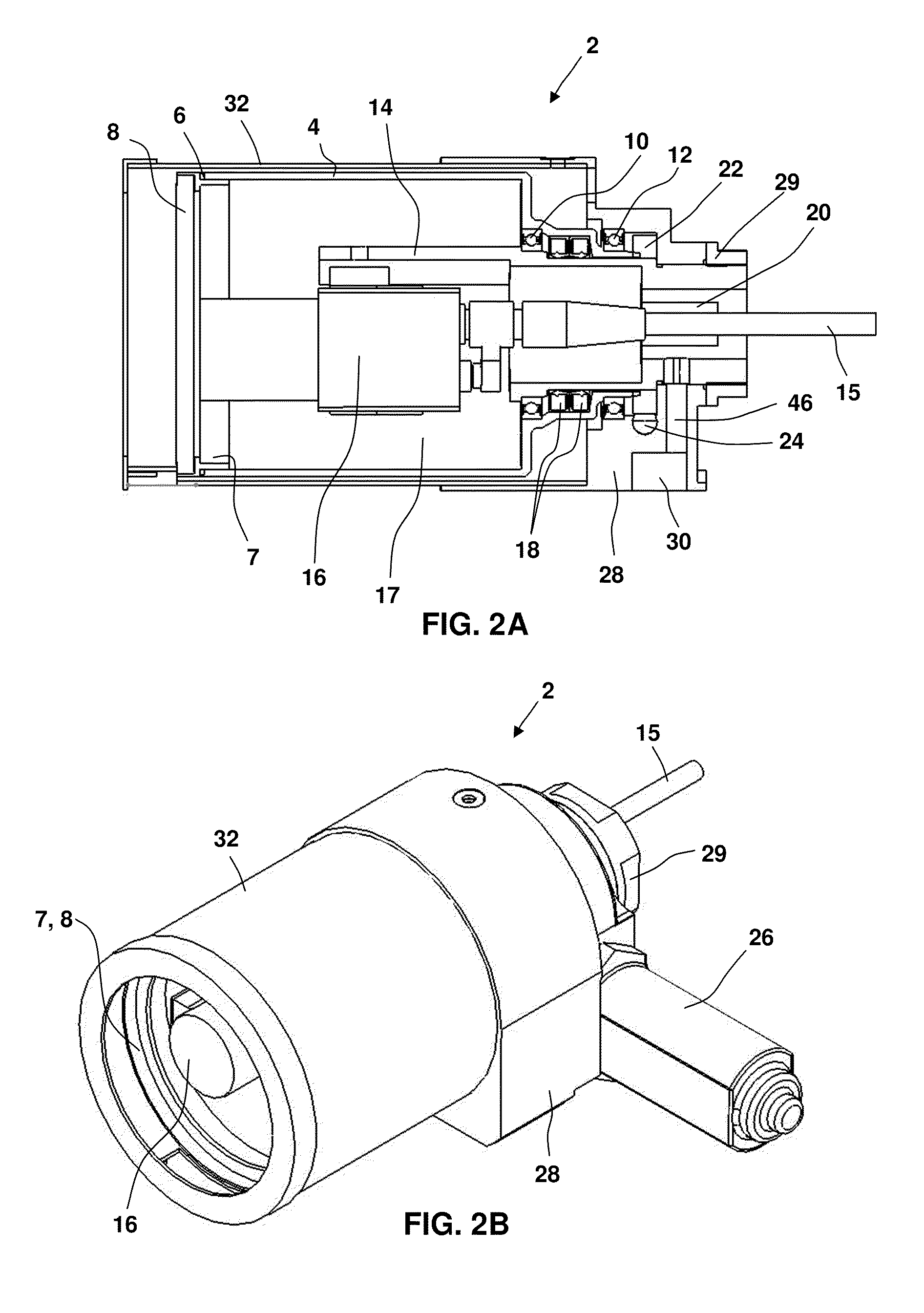Moisture barrier breathing device
a technology of breathing device and moisture barrier, which is applied in the field of cleaning, can solve the problems of high friction of the window's dynamic sealing element, high and the higher the power and complexity of the driving lin
- Summary
- Abstract
- Description
- Claims
- Application Information
AI Technical Summary
Benefits of technology
Problems solved by technology
Method used
Image
Examples
Embodiment Construction
[0025]In the following description of some embodiments, identical components that appear in more than one figure or that share similar functionality will be referenced by identical reference symbols.
[0026]FIGS. 1A and 1B are simplified schematic side cross-sectional views of a cleaning assembly according to first and second embodiments of the invention, respectively, detailed views of which are shown in FIGS. 2A to 2E. As best seen in FIG. 1A, the cleaning assembly 2 comprises an enclosure 4 for accommodating therein an electro-optical device 16 (constituting an optical device). In FIG. 1A the optical device 16 is shown as having an optical axis parallel to a longitudinal axis of the enclosure 4. However, it may also be transverse thereto as shown in FIG. 1B. The enclosure 4 is adapted for rotation about a shaft 14 which supports the optical device. The shaft 14 is anchored to a stationary structure 28 via a flange nut 29 and includes a bore 20 for accommodating external electrical ...
PUM
 Login to View More
Login to View More Abstract
Description
Claims
Application Information
 Login to View More
Login to View More - R&D
- Intellectual Property
- Life Sciences
- Materials
- Tech Scout
- Unparalleled Data Quality
- Higher Quality Content
- 60% Fewer Hallucinations
Browse by: Latest US Patents, China's latest patents, Technical Efficacy Thesaurus, Application Domain, Technology Topic, Popular Technical Reports.
© 2025 PatSnap. All rights reserved.Legal|Privacy policy|Modern Slavery Act Transparency Statement|Sitemap|About US| Contact US: help@patsnap.com



